The common cold doesn’t stand a chance against echinacea. This powerful plant has been used for centuries to combat viruses and bacteria, and remains one of the most influential herbal plants today. Learn all about echinacea benefits and uses, and how you can use echinacea to boost your immunity, straight from the source.
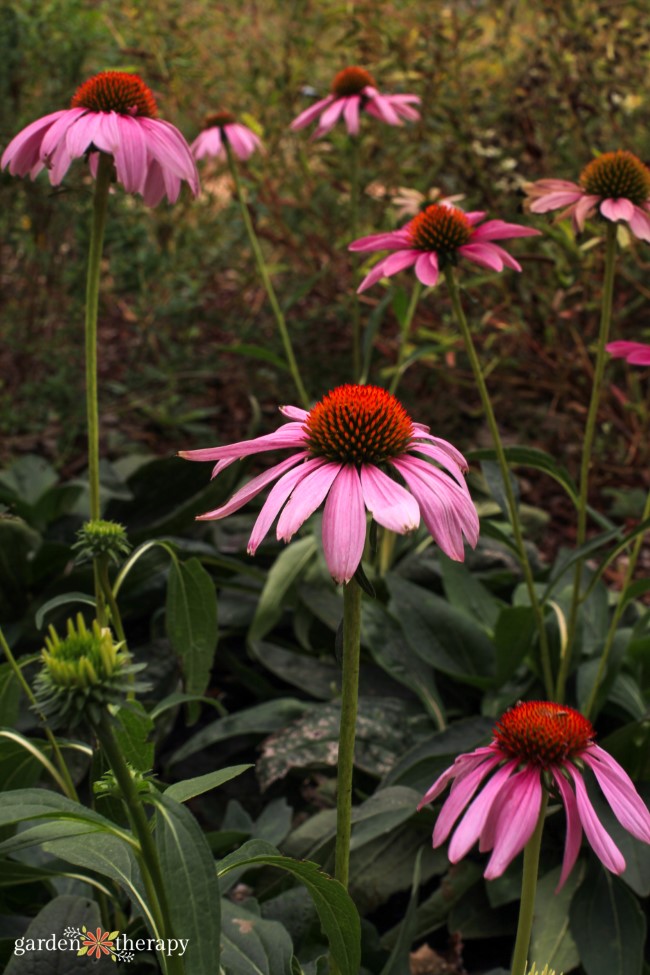
Echinacea would win an herbal popularity contest in a landslide. It’s quickly made its way into the mainstream, becoming a pill or tincture you can buy at the same time you grab your milk and bread from the grocery store.
But I wonder how many people know that echinacea is actually a powerful plant with a deep history. Or one that seed-eating birds and pollinating insects love to snack on and visit. Echinacea will grow on poor land, survive droughts, and still produce long-blooming flowers.
As you can tell, I’m a big echinacea fan.
Today, I’m going to dive into why we know echinacea as an immune system powerhouse, and how you can utilize it to its fullest strength this cold and flu season.
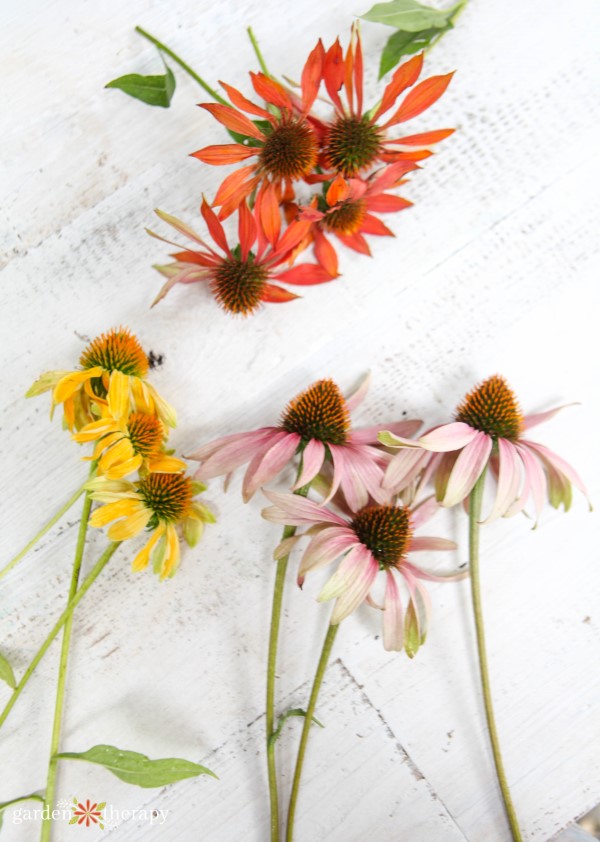

Meet the Echinacea Flower
Also known as the coneflower, echinacea is part of the Asteraceae family (the daisy family). It’s Native to North America, including Saskatchewan, Manitoba, New Mexico, Texas, and Louisiana, where it grows in prairies and amongst woodlands.
Echinacea are distinct from other daisy-like flowers thanks to their large, cone-like center. They have a bristly center and hairy leaves, giving them a notable texture. They grow as perennials with a long tap root.
There are nine echinacea species, but only three are used medicinally. The Echinacea purpurea (purple coneflower) and Echinacea angustifolia (narrow-leaved coneflower) are the most popular medicinal species, while the Echinacea pallida (pale purple coneflower) is used by some.
While there are some beautiful hybrid varieties, like ‘Sunset’ or ‘Sunrise’, I wouldn’t consider them to be medicinal. They might have different constituents in them and have been bred for different qualities.
To learn more about how to grow and care for these wonderful plants, both medicinally and as ornamentals, be sure to check out my echinacea growing guide.
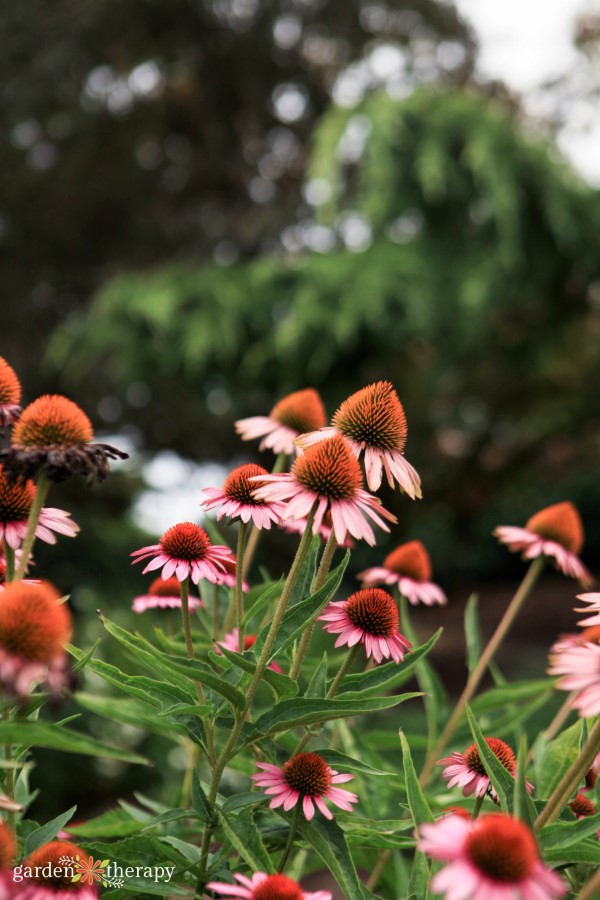

History of Echinacea
The word echinacea comes from the Greek word for echinos, which can translate to sea urchin or hedgehog…two very different creatures! In this case, it refers to the prickly and spikey cone head.
Echinacea has been traditionally used by the North American Plains People for over 400 years, and we have them to thank for the incredible popularity of this herb. They called the plant elk root after they observed sick and injured elk eating it.
The indigenous people used echinacea for many reasons, but most notably used it to treat cold symptoms (unlike today, where we more often use it to prevent cold symptoms). Other notable uses include helping to dispel mucus, relieve insect and snake bites, alleviate burns, and assist with dental cavities.
By the late 1800s, echinacea was the most common herb used in the US. It was slowly introduced to Europe and European-American physicians, where it continues to be used today.
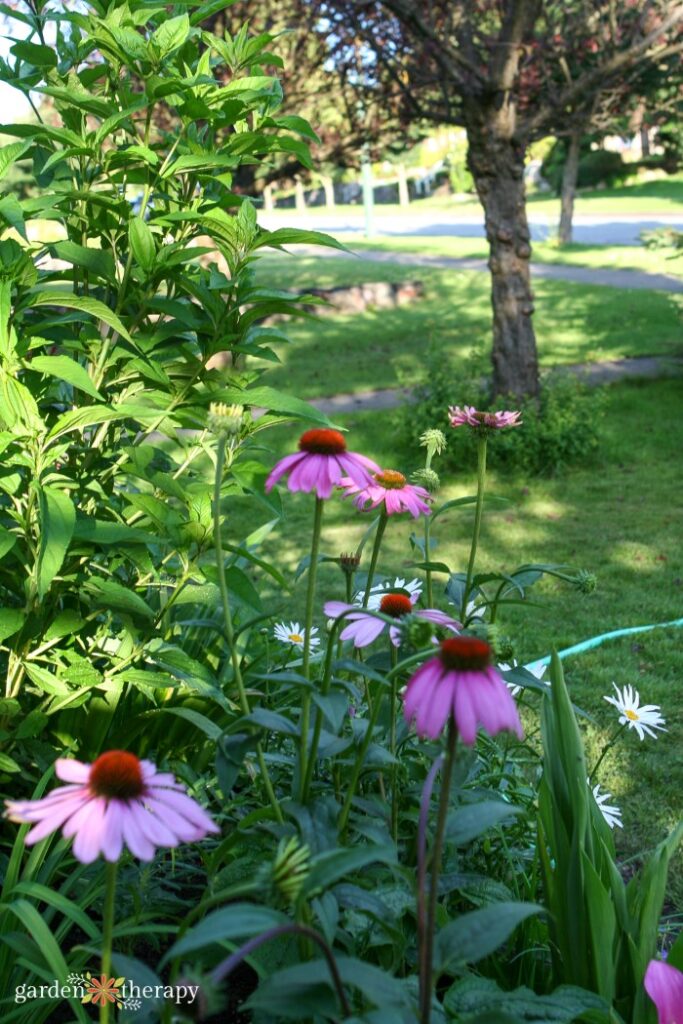

Echinacea Benefits
Echinacea is marketed as THE cold and flu herb, and for good reason. It’s known first and foremost as a detoxicant for the circulatory, lymphatic and respiratory systems. AKA it’s an immunity superhero.
Echinacea is antimicrobial, analgesic, and anti-inflammatory, working best as an anti-viral. When echinacea makes direct contact with a virus, it helps to strengthen the mucus and prevent the virus from going deeper into the issue. It has a notable tingling sensation.
Echinacea works best at addressing a virus ahead of time. People can use it when they first feel the slightest symptoms or have been around someone who was sick to prevent a virus from getting worse. However, it’s less helpful at treating colds once established.
Many more studies need to be done on echinacea and its use. Some studies show how well it works, while others are inconclusive. But there are so many factors to consider, including what species they use, what part of the plant, what dosage, etc. I trust in the knowledge passed down from generations and the firsthand experience of its effectiveness!
Antioxidant, Anti-Inflammatory, and Inhibitor
Echinacea is known as an anti-inflammatory, being used to reduce swelling and help with chronic pain. It’s also high in antioxidants, most notably in the flowers and leaves. It’s also been suggested that these antioxidants can help to improve blood sugar.
One lesser-known use can be dated back to the indigenous people and their use of echinacea to treat snake bites. Echinacea can inhibit hyaluronidase enzymes, which are known to break down hyaluronic acid in our connective tissues and skin. Echinacea can prevent this from happening, helping to hold onto that hyaluronic acid in our tissues and prevent the spread of the enzymes.
How to Use Echinacea
Echinacea is known first and foremost as an immune booster and is readily available in Western medicine. You can get it in drops, tinctures, syrups, and pills, all available at your local grocery store or herbal store.
I went to this amazing talk on the medicinal properties of plants, and during the discussion, they noted that these commercial products aren’t as effective as utilizing the actual plant.
Why? There is so much that we still don’t know about how these plants work together. It may not be just the medicinal property that we need, but a constituent in the plant that helps to activate the medicinal effect on people. And they haven’t figured out that puzzle piece yet.
So while you can take echinacea as an herbal supplement and suck on the lozenges when you have a cold, it won’t have the same effect as growing the medicinal plant and making a tincture yourself.
There are many opinions on which type of echinacea is better to use, and whether the roots or the fresh juice of the flowers and leaves is better. Most people use either the juice of the aerial parts of E. purpurea or the root of E. angustifolia.
I prefer to use the root of E. purpurea. For me, it is the strongest and grows best in my garden, but determine what is best for yourself and what’s the most readily available in your area.
If you’re buying echinacea commercially, be sure to purchase from reputable brands. Multiple studies (like this one or this one) have shown that some brands contain very little or even no echinacea. It should make a tingling sensation on the tongue. If it doesn’t, it’s not potent enough to be of use.
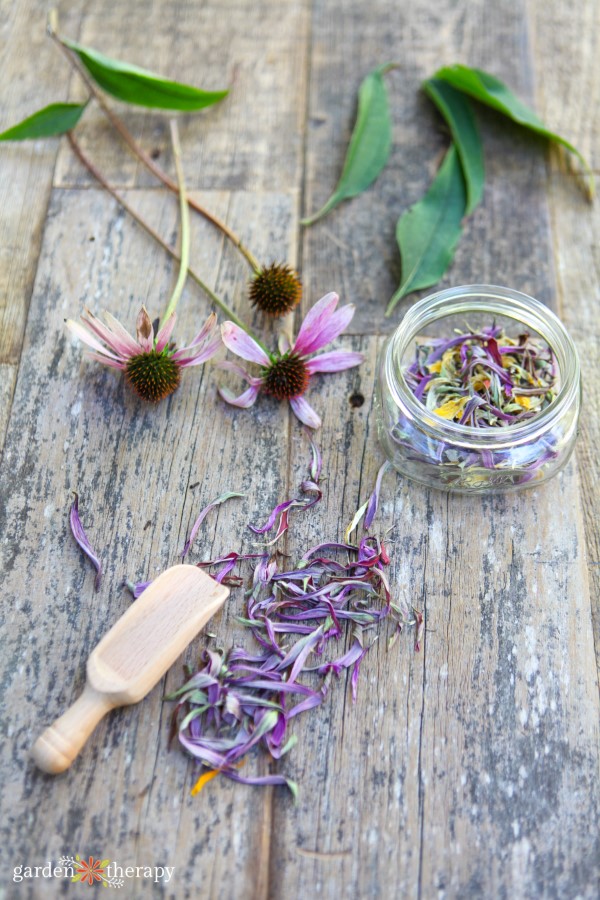

Harvesting Echinacea Sustainably
Since echinacea prefers prairies and open grassland, it is considered at-risk due to habitat loss from agricultural use. It’s best to grow your own rather than forage for it.
If harvesting roots, they’re best harvested in the fall after the first frost. You can then dry the root for use.
To make juice from the leaves and flowers, they’re best harvested during the summer when they are in full bloom. If using the flowers and leaves, they’re best used fresh as they lose potency when dried.
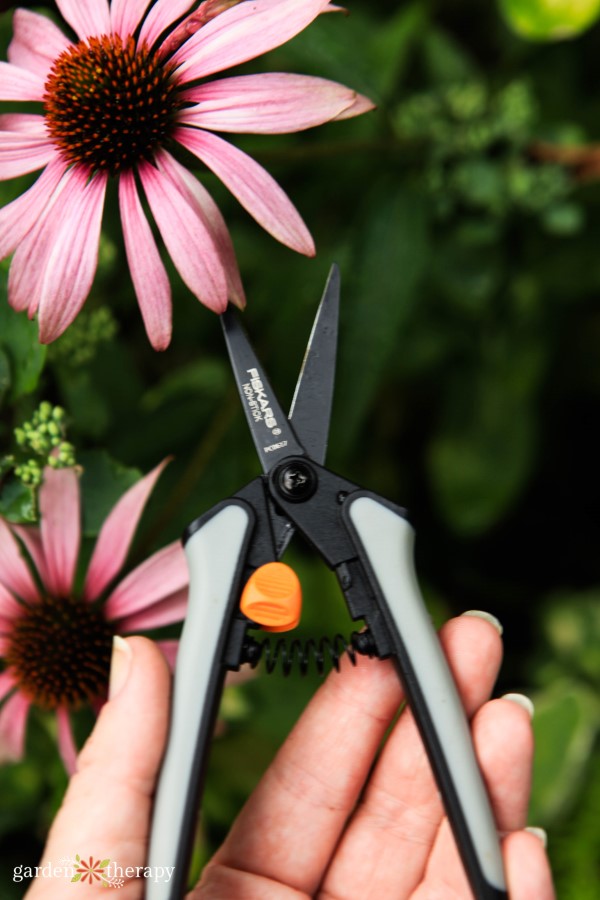

Medicinal Uses
The roots are commonly used to make a tincture, just in time for cold and flu season. I explain exactly how to make your own tincture in this post.
Use tinctures to help boost your immunity. Make direct contact with the back of your throat, making sure you feel that tingling sensation to know that it’s working.
You can also use the plant topically by grinding the herb and mixing it with water before placing it on the affected area.
Of course, echinacea is also a very popular herbal tea. I explain how to make it in a tea in this post.
Note that echinacea has shown signs of potential efficacy when overused. Take echinacea for 10-14 days and then take a short break.
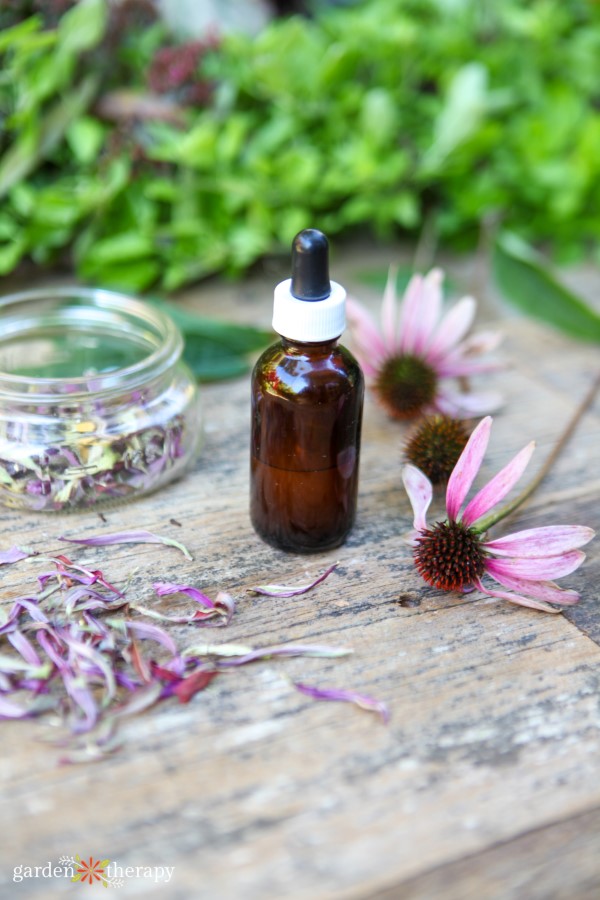

Other Non-Medicinal Uses
I also wanted to shout out some of the other ways that I use echinacea besides its medicinal properties and as an ornamental garden plant. I love to dry the flower petals and use them in soap. They retain their purple colour beautifully and are always easy to dry.
I also use the flower heads in dried arrangements. The petals will curl and look nice on their own, but you can also pull them off and embrace the spike cone in the center.
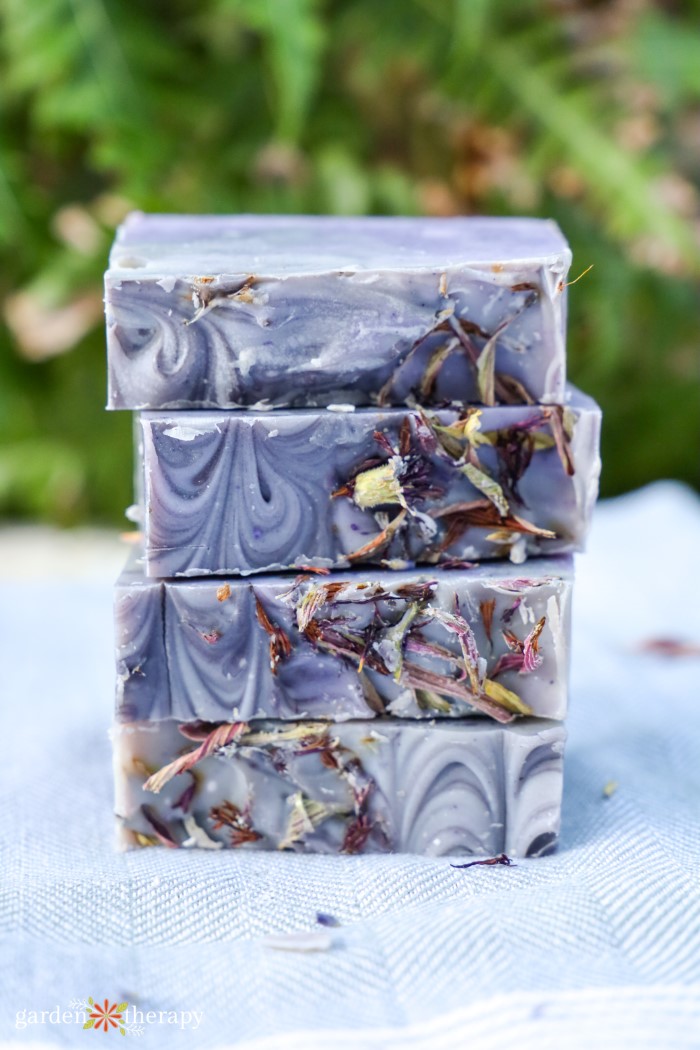

I’ve covered a lot here on echinacea, so I’ll leave it at that! Be sure to check out my growing guide or tincture guide for more information. If you have any questions, feel free to leave them in the comments below.
More Helpful Tips for Echinacea
A city girl who learned to garden and it changed everything. Author, artist, Master Gardener. Better living through plants.

